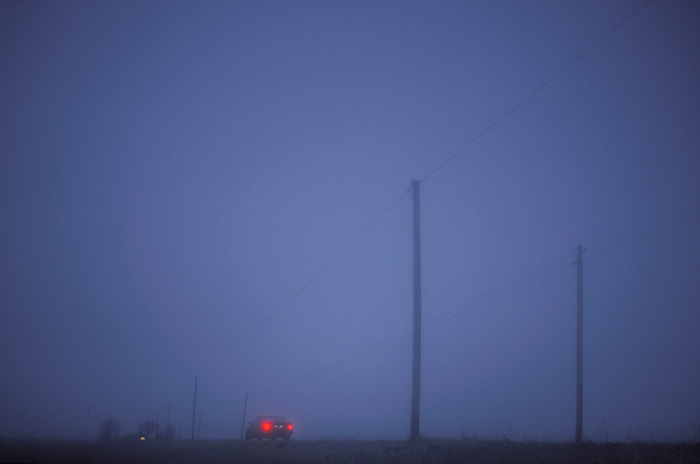
© 2011 Gert Wagner All Rights Reserved.
Unsavory weather can add drama and impact to an image.
The world, being full of beauty, is a real paradise for the photographer. Why then bother with less promising subjects?
Every once in a while we find ourselves in situations with absolutely no inspiration for the creative act of shooting pictures, although we would like or may need to so. For the amateur and professional alike, this can be particularly frustrating.
As a professional who is expected to deliver results under any circumstances, this pressure has trained me never to give up when stuck in what feels like hopelessness, a state of mind I have experienced on plenty of occasions. In the end, I was mostly rewarded with unexpected images of a very special and unplanned charm, which I would not have wanted to miss.
I would like to share with you some of my own professional experiences in order to encourage photographers not to resign when faced with what first appears to be unpromising subjects. With a new outlook and positive attitude, a new world of surprising opportunities will open up for you.
EXPECTATIONS
By chance I overheard a conversation once in an advertising agency: somebody suggested a photographer for a particular assignment, and somebody else objected, “No, no, we’d better not, it always rains when we work with him.“
I was stunned, because up until then I was apparently not aware of a photographer’s full range of responsibilities. It just shows the expectations with which you may have to cope as a professional photographer or if you are looking to become one. Regardless of the circumstances, impeccable results speak for themselves. When returning from a job, nobody is interested in hearing about the problems one encountered. Bad weather, distress at sea, cholera – never mind, as long as the pictures are great.
I have learned the difference between expectations and reality from hard experience. Problems on location require the photographer to be flexible—he/she is responsable for success. This is what makes a pro: delivering results whatever the cirumstances.
WEATHER EXAMPLES
Lead Photo Above: There I stood in a remote countryside of sheer dreariness with dusk and fog approaching rapidly. I had absolutely no idea how I was going to shoot the requested image at this location—a picture that was needed for a book project to be published soon. Then came the ah, ha moment! I remembered that my car was parked near by. Rushing back to it and driving it further down the road only took a couple of minutes. Placing a heavy box on the brake pedal ensured that the bright rear lights I needed would remain lit. Having rushed back to my camera standpoint in the field I was certain that this primitive trick had saved my picture. The two red lights of a lonely car in the middle of nowhere – that was it!
For a remote winter scene on the Northern German coast, with fading light and few contours, I used a similar idea for more colour and narration. Just the bow of a trawler at the bottom of my picture completely changed the situation – and saved it.
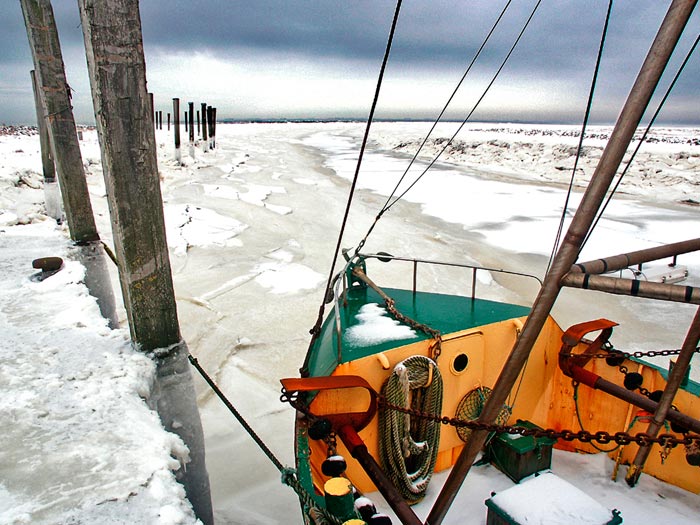
© 2003 Gert Wagner All Rights Reserved.
Quick thinking and problem solving abilities help, along with ingenuity.
Beautiful Venice! The place seems so unreal and this is what I was keen to capture. Since my arrival, rain, chill, and fog had dominated this enchanted city for days and kept me on standby for more favorable shooting conditions. But wasn’t I originally looking for something different from the countless clichés already in existence? Why not take this unexpected opportunity! The lonely carousel with its bright colours and cheerful illumination cutting into the foggy scenario seemed sufficiently absurd to give an impression of the surreal Venetian atmosphere.
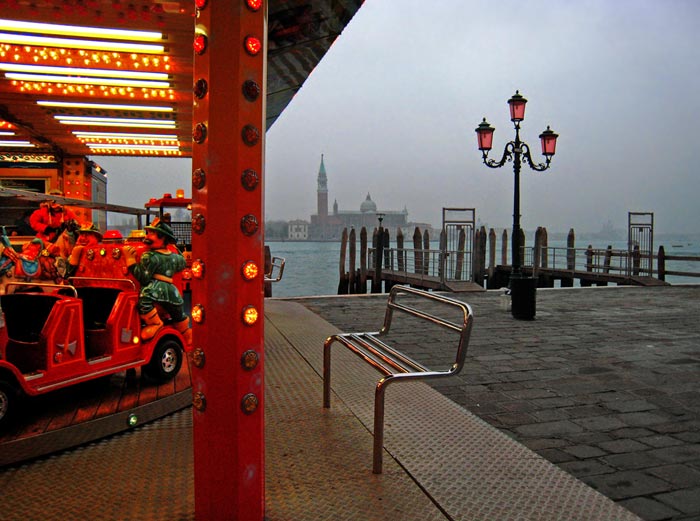
© 2008 Gert Wagner All Rights Reserved.
Just get up, grab your camera—there’s always an image at your fingertips.
On many other occasions with high-toned jobs at stake, I had badly needed sunshine and hated the unpredictable situation of an ugly cloud ruining my sunlit, gold-plated scenes. Anything might happen – upset stomach, defective lens, lovesick model – nothing really could prevent me from shooting. But gosh, the sun had to be there for the special atmosphere I was seeking!
Photo session in California–a calender project with high expectations. Why California? For the sun, of course! The plan: a female beauty leaning on a sportscar with the warm afternoon sun accentuating the classy curves of car and body. The reality: days of overcast skies and endless rain. Finally, at the peak of our team’s frustration, somebody’s absurd idea actually saved the situation. Why not use the melancholy looks of the stormy weather for a totally different story. Under a bridge on a closed road contruction site we found a dry spot. A stopped car with dramatic bright headlights, a girl with scant clothing running away from it – I had my picture. It looked even more exciting than what the original layout had specified.

© 2011 Gert Wagner All Rights Reserved.
The ability to adjust to the weather conditions and “see“ the scene
within one’s mind plays an important role in photography.
CIRCUMSTANCES
It is not only the weather which often creates problems on location. Plenty of other criteria can ruin situations, regardless of how carefully a shoot has been planned. This is especially true when I am in places that are unfamiliar to me before the moment of arrival.
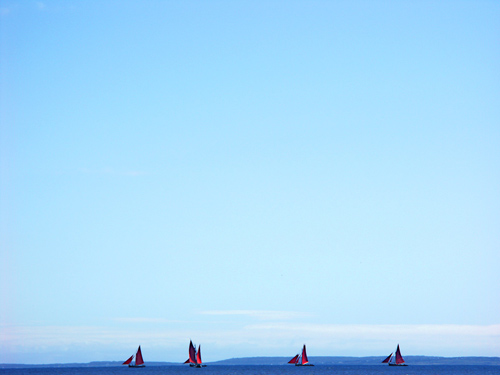
© 2006 Gert Wagner All Rights Reserved.
A good deal of flexibility is required to
be able to cope with the unpredictable.

© 2009 Gert Wagner All Rights Reserved.
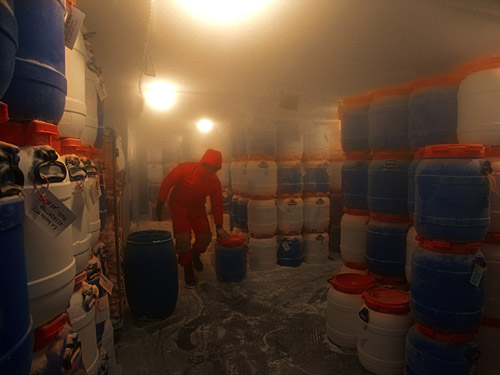
© 2005 Gert Wagner All Rights Reserved.
People in an image can give the viewer a new perspective of a location and give life to an image, so don’t be too quick to walk away from a shot that includes the activities of people.
Connemara in Western Ireland is home of the Galway Hooker, an ancient type of sailing vessel still in the possession of some obsessed collectors. Once a year they assemble for the famous Hooker races. I was eager to shoot the event. To my disappointment, after having left the harbor, the picturesque flotilla continued its race far out at sea. Even with my 300 mm lens I could hardly trace them on their course down the coast. But I continued shooting until they finally vanished over the horizon. In the end, I came to like those tiny silhouettes under the broad sky of the Irish Atlantic.
A summer evening at the Danish seaside with the beautiful light of a retired sun – ideal for the long awaited nature shot. But what about those people on the beach disturbing my vision? I had no choice and decided for a different approach by just integrating them. In fact, this version turned out to be the more interesting scene. Determination is good, so is flexibility.
A cold storage facility image proved to be more difficult to get while on a corporate assignment. Yes, it was cold and a rather dull photographic location! But once I found this workman in his red insulated clothing, the location and final image came to life and fully demonstrated the artic temperatures within which he worked.
A little luck and the phrase Patience is a Virtue applies! Some of the toughest surprises waited for me on a world tour, shooting for a calender project for a mineral oil corporation. The twelve themes were to cover the long path crude oil takes to get from the gusher through the refining process and finally to the gas station. Each picture, printed on a glossy super size format, had to be an artistically-interpreted record of a fundamentally unattractive crude oil scene. I had won this job by describing to my client breathtaking images of silver pipelines stretching to the horizon into the setting sun, and of a hightech pump in the middle of the abstract ice-covered surface of Alaska looking like a modern cathedral. However, not long after departure I began to realize the huge gap between my lavish imagination and harsh reality.
On my arrival in the Emirates, a representative of the oil company pointed out to me that a pipeline photo required a special permit which could not be granted in less than two weeks. Two weeks for a single photograph! In the meantime, a chauffeur-driven limousine was generously provided, thus giving me a chance to look for themes in advance. Since shooting without a permit was strictly prohibited, my chauffeur was also my ever watchful guard. However, I was as inactive as a tortoise because, much to my growing disturbance, all the pipelines to which he took me were rusty, dark brown and photographically unappealing. They were totally unsuitable for the purpose behind my long journey.
Days passed with the same situation repeated over and over in between long drives through deserted landscapes and with each mile traveled my scepticism grew. But then the unexpected came up just like a desert mirage! At first glimpse, I could not believe what suddenly appeared behind a sand dune: a long silver pipeline placed in the desert like a gleaming jewel, with a red sunball that was about to sink into the sand. We stopped and my guard went for a short walk along the pipeline. Without hesitation I decided to take this unique chance while risking camera and deportation—it was still days before I would get my shooting permit! My secret shot only took seconds, but what the heck, I had my first calender page. Days later, when saying good bye at the airport, I confessed to my escort, and he smiled forgivingly. Ever since, I have owed that man in the Emirates a drink.

© 2011 Gert Wagner All Rights Reserved.
Sometimes you just have to grab the shot! But for the majority
of photographers, it is always best to follow the rules of a location or country.
My next destination was the Forties oil fields in the North Sea–a two day journey by supply vessel far from the Scottish coast. I was looking forward to a sea drenched in sunlight with bountiful waves. But not on this trip. It was just grey and boring, without waves and without contrasting light on the remote drilling platforms. It was certainly not suited for a calender subject that would be viewed for an entire month.
After many desperate hours of trying out different subjects and waiting for the weather to change, the captain eventually turned the boat to head back for the coast. With my camera stoyed away in my cabin, I stood on the quarterdeck feeling rather defeated. All of a sudden the cloudy sky opened just enough to let through a beam of sunlight right where a platform was located. I rushed to my cabin and hurriedly grabbed a camera and my longest lens and managed by the skin of my teeth to catch the last few seconds of sun dancing on the water with the silhouette of a drilling platform in the distance. With a fair amount of underexposure placing emphasis on the illuminated areas, I had an image worthy of a calender subject.
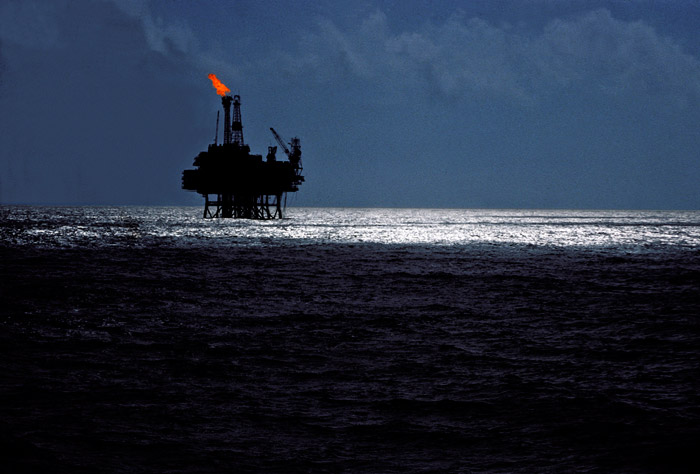
© 2011 Gert Wagner All Rights Reserved.
Lesson learned: Never pack the camera away before the subject is out of sight.
As for Alaska, my expectations of fascinating subjects were at their highest, as the task of drilling oil inside the Artic circle is a gigantic undertaking. After a long flight over from Europe it still took several lengthy laps by small aircraft to finally get to Prudhoe Bay, which is right in the Alaska tundra close to the frozen sea. Tundra sounds exciting, but from a photographic point of view the contrary was true, at least right now, with once again grey skies and pouring rain.
The area around Prudhoe Bay was chosen for the opening subject, because this is where it all starts: first surveying land and sea and then starting to drill for the black gold. For a few hours, I had a helicopter at my disposal so I could get to the gushers without having to drive around for days. However, these geysers were looking unexpectedly small and tired and not at all like suitable stars for my shots. In the hope of finding fitting alternatives, I took some land surveying gear along and a pair of screaming red workgloves. These I had bought long before at an Anchorage hardware store in the vague anticipation of problematic shoots.
The pilot knew the area well and flew us right to the very edge of an ice-covered seaside where it had stopped raining with some patches of blue skies developing. Ignoring the far away geysers, we landed on a solid floe and I had to ask him to temporarily change jobs by acting as an engineer out surveying the area. Freezing, he got out of the warm cabin, put on a red working glove and bravely held on to the yardstick we had taken for the occasion while I was circling the scene with my camera. Unbelievably, the variety of shooting angles for this really simple scene seemed endless: close to my wide angle lens, the glove appeared huge with the wide ice sea behind. When moving back a little, the glove was small, the sea behind even wider. With varying heights of horizon and glove I again got totally different images of sea, sky, and glove with yardstick. My pilot was puzzled about the many pictures I shot. Finally, the icy wind and a rain shower forced us to take off and head for the warmer cafeteria of Prudhoe Bay.
The world of crude oil appeared to be a difficult place for the creation of aesthetic images and forced me to look for symbols which I could integrate in clear picture composition. Prudhoe Bay in Alaska was a typical example. Later, the calender was given a prize at an international contest and I am sure the red glove had contributed.

© 2011 Gert Wagner All Rights Reserved.
Remember to get creative and always check and shoot your subject from
every possible angle. You may not get the chance to return to that location again.
And, adding accents of the colors red and yellow will make an otherwise
drap environment pop with life.
Apart from weather and circumstances, sometimes it can even be oneself creating unfavourable shooting conditions by being in a negative state of mind. It may take some effort then to get back to a more open attitude towards given circumstances, but once you manage to get on top of the situation again, you’ll find that your attitude quickly changes to positive, thus resulting in unexpected results from improvised solutions.
Actually, looking at it this way, there really are no unfavourable subjects.
by Gert Wagner
(Edited from his book PHOTOGRAPHIC CHALLENGES and iphone app)

Leave a Reply